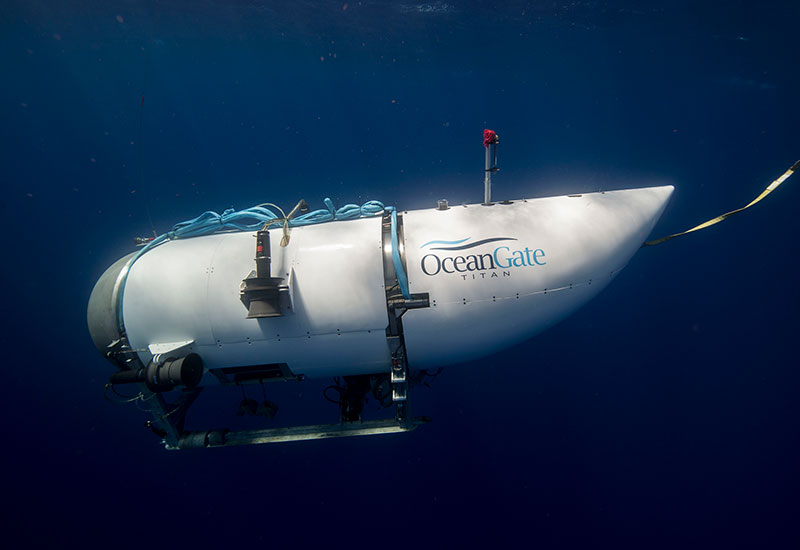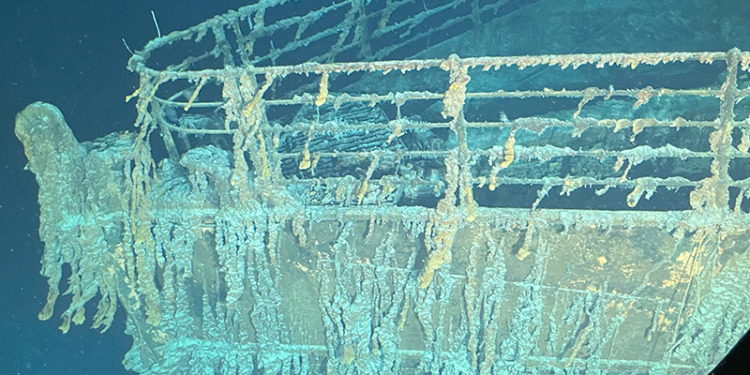A massive search and rescue effort is underway in the North Atlantic following the disappearance of a submersible exploring the Titanic’s wreck. The research vessel Polar Prince, carrying the Titan sub, lost contact with the submersible during its dive in the area of the Titanic wreckage. This started an extensive search operation involving government agencies and international assistance.
As the oxygen supply is minimal on the submersible, the search continues. Here is an overview of the latest developments and the ongoing rescue efforts.

Rescue Operation
The Polar Prince arrived near the location of the Titanic wreckage in the Atlantic Ocean on Sunday morning, prepared for the submersible’s dive. However, approximately one hour and 45 minutes into the dive, the crew on the research vessel lost contact with the Oceangate submersible.
The submersible was believed to be around 900 miles off the coast of Cape Cod when the communication was lost. The US Coast Guard, leading the search operation, faces significant challenges in such a remote and vast area, as the sub might have moved from the area of the Titanic wreckage.
The search operation comprises both surface and underwater efforts. The US Coast Guard has deployed two C-130 Hercules aircraft for surface search and has been joined by a Canadian C-130 and a P8 aircraft equipped with underwater sonar capability. Additionally, sonar buoys are being deployed in the search area. Rear Admiral John Mauger of the US Coast Guard has acknowledged the need for additional expertise and assistance from entities like the US Navy and the private sector if the submersible is found underwater. Canadian coast guard vessel Kopit Hopson, the Polar Prince, and another ship called the Horizon Arctic are helping in the search for the missing submersible.
People Onboard
There were six people on board the Titan submersible. They have all been identified now. Hamish Harding, a 58-year-old British businessman, and explorer. Pakistani businessman Shahzada Dawood and his son, Suleman Dawood. French explorer Paul-Henry Nargeolet and Stockton Rush, the CEO of OceanGate are missing as well. Hamish Harding, known for his involvement in aviation, had expressed his excitement about joining the mission to the Titanic wreck. The Dawood family confirmed their presence on the submersible and requested privacy while expressing gratitude for the concern shown by colleagues and friends. Passengers paid up to $250,000 to join this expedition which includes several dives on the site of the Titanic wreckage.
RMS TITANIC EXPEDITION
I am proud to finally announce that I joined @OceanGateExped for their RMS TITANIC Mission as a mission specialist on the sub going down to the Titanic.@ExplorersClub @actionaviation @One_More_Orbit #PolarPrince
Full story at:https://t.co/7UWUrKGyTQ
— Hamish Harding (@ActionAviation0) June 17, 2023
The Titan Submersible and Titanic Exploration
The Titan submersible, operated by OceanGate Expeditions, is made for deep-sea exploration and can go down to 4,000 meters (2.5 miles). It has modern lighting, sonar navigation, 4K video, and photography systems. OceanGate’s trips to the Titanic wreck, which began in 2021, are trying to give visitors a captivating experience and do scientific research on the ship’s damage.
RECENT ARTICLES: UK’s Best Electric Vehicles for Under £50,000 – A Buyer’s Guide |
Possible Scenarios
Experts have analyzed various scenarios to explain the submersible’s disappearance. One possibility, the best case scenario, is that the submersible released a “drop weight” after encountering an emergency, which could have enabled it to ascend to the surface without propulsion. However, the absence of any distress signal or debris on the surface has cast doubt on this theory.
Other scenarios include a power or communication failure within the submersible, as it normally sends a ping signal every fifteen minutes to signal its position and it had stopped doing so. A leak in the hull could be another possibility however the submersible has passed several hundreds of tests before deploying, without ever facing this issue. Another scenario is the submersible and Titanic tangled. This would not be the first time a submarine makes contact with the wreckage. It is however a huge problem as there is no navy submarine able to reach that depth for rescue operations and the Oceangate’s sub is sealed from the outside.
It's been an incredibly busy two weeks! Thank you to all of our dive teams who've joined us – here's a look at our Mission 3 and Mission 4 crew.
Learn more about the Titanic Expedition: https://t.co/F7OtKI0En7 pic.twitter.com/hRNbwje0CG
— OceanGate Expeditions (@OceanGateExped) June 15, 2023
Race Against Time
Time is of the essence in this search and rescue mission, as the crew’s oxygen supply is limited. The US Coast Guard estimates that the submersible may have between 70 and 96 hours of emergency oxygen as of Monday. Each passing hour further reduces the likelihood of a successful rescue, making the need to locate the vessel and bring it back to the surface as soon as possible. The search operation faces numerous challenges due to the extreme depths and the vast expanse of the North Atlantic.
Considering the joint efforts locating the vessel might seem possible, but the extreme depths of the Atlantic Ocean, the currents, and the difficult weather conditions in the area make this rescue mission very difficult.
Editor’s Note: The opinions expressed here by the authors are their own, not those of Impakter.com — In the Featured Photo: Himalayan Mountains. Featured Photo Credit: Unsplash.










